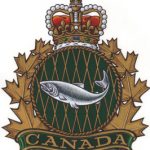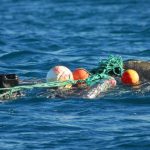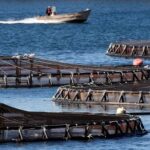Tag Archives: McClellanville
Tom Poland – Wake-up call aboard the F/V Pamela Sue
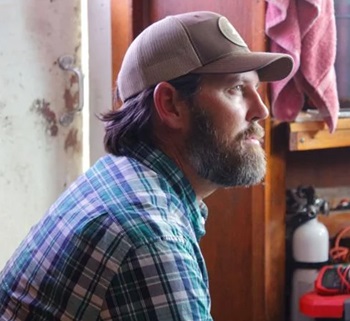 I got up at 4:30 a.m. to go to two Carolina bays in the Francis Marion National Forest. Hours later I left pitcher plants, blue irises and Halloween pennant dragonflies and headed to the McClellanville Diner for a platter of fresh-caught domestic shrimp. Consumers take note: it was not frozen, imported shrimp. After lunch I went into McClellanville, a lovely fishing village that’s home to South Carolina’s largest fleet of shrimp boats. As I made my way into McClellanville, I passed T.W. Graham & Co., another great local restaurant. Hand-painted on its windows were “Support #Freshlocal” and “God Bless Our Shrimpers.” Carolina Seafood sits on Jeremy Creek, a creek named after King Jeremy, a Seewee Indian chief whose tribe lived along the creek’s banks. There I met Capt. Bryan Jones. He catches shrimp, no easy task. Besides the hard and dangerous work, he must overcome many a challenge. Capt. Jones showed me around his boat, Pamela Sue. more, >>CLICK TO READ<< 08:31
I got up at 4:30 a.m. to go to two Carolina bays in the Francis Marion National Forest. Hours later I left pitcher plants, blue irises and Halloween pennant dragonflies and headed to the McClellanville Diner for a platter of fresh-caught domestic shrimp. Consumers take note: it was not frozen, imported shrimp. After lunch I went into McClellanville, a lovely fishing village that’s home to South Carolina’s largest fleet of shrimp boats. As I made my way into McClellanville, I passed T.W. Graham & Co., another great local restaurant. Hand-painted on its windows were “Support #Freshlocal” and “God Bless Our Shrimpers.” Carolina Seafood sits on Jeremy Creek, a creek named after King Jeremy, a Seewee Indian chief whose tribe lived along the creek’s banks. There I met Capt. Bryan Jones. He catches shrimp, no easy task. Besides the hard and dangerous work, he must overcome many a challenge. Capt. Jones showed me around his boat, Pamela Sue. more, >>CLICK TO READ<< 08:31
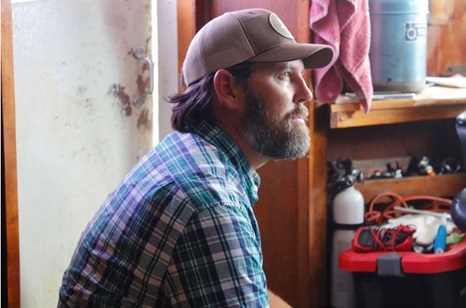
Wake Up Call Aboard The Pamela Sue
Carolina Seafood sits on Jeremy Creek, a creek named after King Jeremy, a Seewee Indian chief whose tribe lived along the creek’s banks. There I met Capt. Bryan Jones. He catches shrimp, no easy task. Besides the hard and dangerous work, he must overcome many a challenge. Capt. Jones showed me around his boat, Pamela Sue. Making our way through and past an assemblage of ropes, pulleys, nets, chains, and cables I filed a mental note. “Never bring a tripod onto a shrimp boat’s deck.” The chance of snagging something dangerous is great. Capt. Jones and I sat in the wheelhouse of his 1958 boat. As he discussed shrimping’s challenges, I looked around. I noticed bunk beds right away. Shrimpers sleep in their floating office, their home away from home. I saw too a small galley and a handsome wooden wheel caught my eye. And something else. An array of sophisticated electronics that navigate and portray bottom conditions and more. more, >>CLICK TO READ<< 10:33
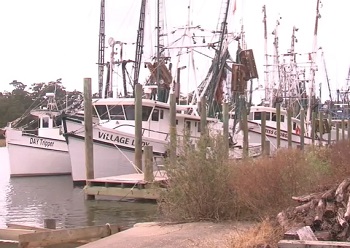
McClellanville receives $25K grant to help preserve its working waterfront
McClellanville is one of 12 towns recently awarded the Hometown Economic Development Grant from the Municipal Association of South Carolina. The $25,000 grant will go towards an economic development plan to keep and preserve it’s working waterfront, the main economic and cultural aspect of the town.,, “It’ll help the whole town out, this is a shrimping and fishing village, so that working waterfront, probably about half of that town relies on that working waterfront,” >Video, click to read< 09:49
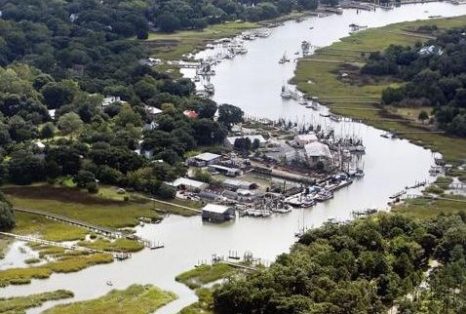
Working Waterfront – One of last SC commercial fishing hubs could close. Land trust seeks funds to save it.
Larry Mcclellan can look from the porch of his century old farmhouse out across Jeremy Creek where the shrimp boats rock under their hanging nets. Mcclellan captains one of the boats there and his son captains another. The creek, which leads to the rich Bulls Bay shellfish waters, is his livelihood and his life. The hub of it all, where the boats are moored, is the Carolina Seafood dock. That’s how integral Carolina Seafood owner Rutledge Leland’s business is to McClellanville, the modest fishing village north of Charleston. >click to read<12:44
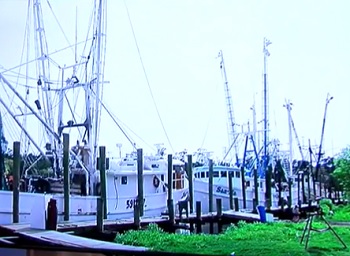
McClellanville working to preserve working waterfront
McClellanville is a small town working towards a big catch. The town is trying to protect one of last working waterfronts in the Lowcountry. Fishing and shrimping remain a major source of income for many residents. However, the future of the local docks is uncertain. The docks sit along Jeremy Creek, ushering in boats from sun up to sun down. The town has been partnering with the South Carolina Sea Grant Consortium, Carolina Common Enterprise, and the East Cooper Land Trust, on developing a plan to save the docks. >click to read<18:01
AMSEA to hold two Fishing Vessel Drill Conductor Workshops in South Carolina in March
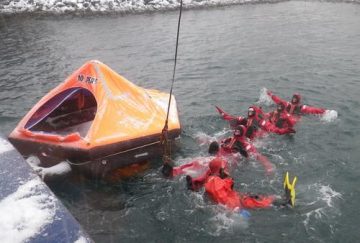 Alaska Marine Safety Education Association workshops meet the U. S. Coast Guard training requirements for drill conductors on documented commercial fishing vessels operating beyond the federal boundary line. On Thursday, March 9, a workshop will be conducted in Murrells Inlet from 8:00 a.m. to 8:00 p.m. at the Murrells Inlet Community Center, 4462 Murrells Inlet Road. A second workshop will be conducted on Saturday, March 11 in McClellanville at the McClellanville Town Office, 405 Pinckney Street. Instructor Michael Lawson will cover man-overboard recovery and firefighting, emergency position-indicating radio beacon stations, flares and maydays, emergency drills, helicopter rescue, life rafts and abandon ship procedures, personal floatation devices, immersion suits and cold-water survival skills. The workshop will include an “in-the-water” practice session for participants to practice survival skills. Interested mariners may register for the workshops online at www.amsea.org or call AMSEA at 907-747-3287. Link 07:15
Alaska Marine Safety Education Association workshops meet the U. S. Coast Guard training requirements for drill conductors on documented commercial fishing vessels operating beyond the federal boundary line. On Thursday, March 9, a workshop will be conducted in Murrells Inlet from 8:00 a.m. to 8:00 p.m. at the Murrells Inlet Community Center, 4462 Murrells Inlet Road. A second workshop will be conducted on Saturday, March 11 in McClellanville at the McClellanville Town Office, 405 Pinckney Street. Instructor Michael Lawson will cover man-overboard recovery and firefighting, emergency position-indicating radio beacon stations, flares and maydays, emergency drills, helicopter rescue, life rafts and abandon ship procedures, personal floatation devices, immersion suits and cold-water survival skills. The workshop will include an “in-the-water” practice session for participants to practice survival skills. Interested mariners may register for the workshops online at www.amsea.org or call AMSEA at 907-747-3287. Link 07:15
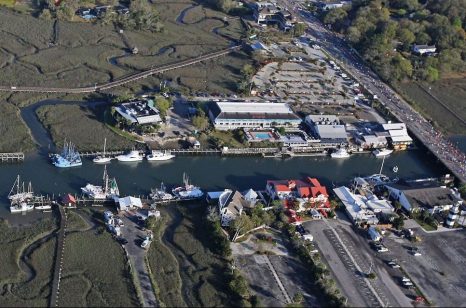
The struggle to preserve Charleston’s ‘working waterfront’
In McClellanville, longtime commercial fishing businessman Rutledge Leland is mulling retirement from Carolina Seafoods and talking to the town’s cadre of shrimpers and other fishing professionals about forming a co-op along Jeremy Creek. In Mount Pleasant, town officials stepped in to moderate an intensifying feud among residents, recreational boaters, commercial fishing interests and others over just what to do about Shem Creek. The town formed an ad hoc committee from among them. At issue is whether the working waterfront can be saved. As those two towns suggest, the answer might just vary from spot to spot. Read the story here 07:59
South Carolina Working Waterfront: Rural attitude, commercial fishing still embraced in McClellanville
 McClellanville stands apart from other working waterfronts in South Carolina in a couple of important ways. Its geographic isolation has helped maintain a rural attitude, and commercial fishing remains the economic driver for the community. These days, the town that got its start as a summer resort for plantation owners has the least touristy feel of South Carolina coastal communities. The small commercial section of the Jeremy Creek waterfront is dominated by two commercial docks—at Carolina Seafood and Livingston’s Bulls Bay Seafood. A public boat landing with limited parking spaces gets crowded on weekends and during the public shrimp-baiting season in the fall, but most of those boats head into the Intracoastal Waterway and leave the working waterfront behind. Read the rest of the story here 12:06
McClellanville stands apart from other working waterfronts in South Carolina in a couple of important ways. Its geographic isolation has helped maintain a rural attitude, and commercial fishing remains the economic driver for the community. These days, the town that got its start as a summer resort for plantation owners has the least touristy feel of South Carolina coastal communities. The small commercial section of the Jeremy Creek waterfront is dominated by two commercial docks—at Carolina Seafood and Livingston’s Bulls Bay Seafood. A public boat landing with limited parking spaces gets crowded on weekends and during the public shrimp-baiting season in the fall, but most of those boats head into the Intracoastal Waterway and leave the working waterfront behind. Read the rest of the story here 12:06
S.C. couple rode out Matthew on their shrimp boat
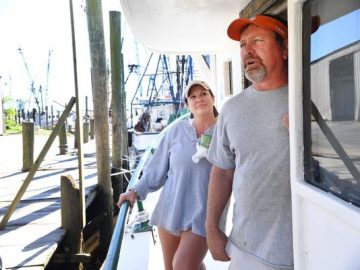 Richard Billington, who was aware of the storm and had taken special precautions with his boat, Village Lady, said the couple did not have cell phone service and they had lost power so they weren’t sure where the storm was. Unbeknownst to them, the hurricane was aiming for a landfall near McClellanville, the same spot where Hurricane Hugo made landfall in 1989 with a 20-foot storm surge and devastating consequences. “We came down here to make coffee and cook breakfast and all of a sudden the storm surge came in and we couldn’t get off,” he said. “The most amazing thing was right during the worst of it, I looked across the creek at a dock and there was about 20 seagulls with 95 to 110 mph winds blowing and the seagulls were still holding onto the dock,” he said. He also noticed an army of bugs coming out of the water and climbing onto the pilings. Read the story here 08:33
Richard Billington, who was aware of the storm and had taken special precautions with his boat, Village Lady, said the couple did not have cell phone service and they had lost power so they weren’t sure where the storm was. Unbeknownst to them, the hurricane was aiming for a landfall near McClellanville, the same spot where Hurricane Hugo made landfall in 1989 with a 20-foot storm surge and devastating consequences. “We came down here to make coffee and cook breakfast and all of a sudden the storm surge came in and we couldn’t get off,” he said. “The most amazing thing was right during the worst of it, I looked across the creek at a dock and there was about 20 seagulls with 95 to 110 mph winds blowing and the seagulls were still holding onto the dock,” he said. He also noticed an army of bugs coming out of the water and climbing onto the pilings. Read the story here 08:33



































